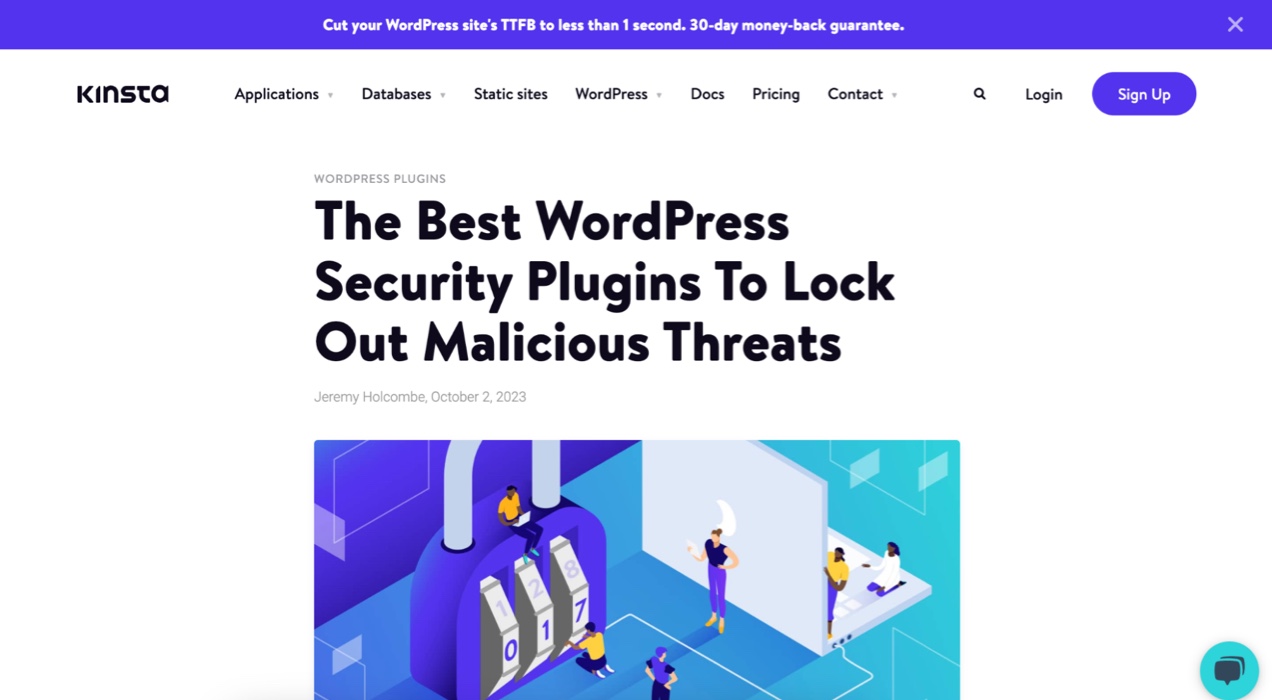This article was contributed by CoSpark, an award-winning WooCommerce agency. CoSpark specializes in enterprise-level development exclusively on WordPress and WooCommerce platforms.
Let’s talk scalability: a vital factor that can propel your business towards mammoth success.
As your WooCommerce store begins to grow, your key focus should be on how to accommodate an increase in customers without compromising on performance, and to get yourself a team of top WooCommerce developers to fuel your vision.
Get ready because this blog post will equip you with every detail needed to prepare your store for more WooCommerce traffic and overall growth. Trust us: you’re in for a thrilling and enlightening ride!
Understanding scalability
↑ Back to topFirst, what is scalability? Simply put, it is the ability of your store to handle an increasing number of customers and effectively accommodate that growth.
Imagine the disappointment if your store crashes just when you’re seeing a surge of new customers. It’s heartbreaking, right? Preparing your store for growth is of paramount importance to avoid such snafus.
Scalability in the context of a store’s backend refers to the ability to manage increasing workloads and customer demands efficiently.
For merchants, this means streamlining processes, automating tasks, and ensuring that the infrastructure can handle growth without compromising on performance or customer experience.
Unprepared growth is more than just a vexation; it also poses challenges such as reduced site speed, frustrating customer experiences, and possible loss of sales. Ouch!
Why is scaling a big deal?
↑ Back to topBuilding scalability into your online store allows it to elegantly handle the hustle-bustle of a traffic surge, maintain lightspeed loading times, and deliver an enjoyable shopping spree to every customer.
- Enhanced shopping: A scaled-up store is like a well-oiled machine; it delivers a breezy and enjoyable shopping experience that will keep your customers hooked (and your bounce rate low!), boosting conversions like never before.
- Performance on point: Scaling is like your store’s magic potion for super speed. It makes sure your shop loads swiftly and responds promptly, meeting your customers’ expectations.
- Uptime, all the time: Growth is exhilarating – but it comes with its share of challenges. One of them is the increased risk of your site taking unexpected naps due to server overloads or technical hiccups.
- Cost efficiency: Scaling is all about smart growth. It guarantees you aren’t shelling out bucks on resources you don’t need while always keeping your guard up for unexpected traffic surges. Efficient scaling is the hallmark of a savvy WooCommerce merchant.
Hosting environment
↑ Back to topThink of your company’s website or ecommerce store as your digital handshake — the first impression you make on potential customers.
To ensure this impression is a positive one, you need a web server that is robust enough to meet your site’s demands. If not, the dreaded happen — crashes or interruptions, especially on those high-traffic days.
According to a report from Unbounce, a slight delay of just one second in page load time can cause a whopping 7% dip in conversions. What’s more, over half of mobile users bid goodbye to a site if it doesn’t load within 3 seconds.
And let’s remember our friend Google, who, in its quest to provide users with the best experience, considers site speed to be a factor for SEO ranking.
When selecting a hosting provider, the twin concerns of server performance and reliability are paramount.
Your goal? A host that boasts at least a 99.9% uptime rate. Since any downtime can lead to lost sales and a dent in your shop’s reputation, maintaining a quick, always-accessible site is essential.
What to consider when choosing your hosting provider:
- Embrace scalability: As your business grows, your hosting package must be flexible enough to handle traffic spikes effectively during busy seasons, which can be a game-changer, so choose your WooCommerce maintenance team carefully.
- Customized hosting perks: Hosting providers that offer custom solutions often offer extras like caching to boost your site’s speed and staging environments.
- Security features: Look for hosting companies that offer SSL certificates, timely backups, and mechanisms to protect against nasty DDoS attacks.
- Technical assistance: Imagine you’re working late, and your site faces an issue. Choose providers that ensure reliable assistance, especially if you’re not a wizard with technical details.
- Pricing: While you’ll naturally be wary of costs, remember the cheapest option isn’t always the best.
- Reviews and testimonials: Real-world experiences can provide a wealth of insights, often revealing the provider’s actual color when it comes to reliability, performance, and customer service.
Server performance
↑ Back to topIn the buzzing realm of ecommerce, two terms you’ll often hear tossed around are “performance” and “scalability.” Even if they might sound like two sides of the same coin, they shine light on different aspects of your online store.
While we already touched on what scalability means, performance zooms in on the speed and responsiveness of your ecommerce site. It’s all about how briskly your site loads and echoes shopper interactions.
While performance ensures that your website provides a seamless user experience, scalability ensures that your website can handle growth and future demands. Neglecting either can lead to lost revenue, customer dissatisfaction, and damage to your brand reputation.
Filip Rakowski
Several factors affect the performance of an ecommerce website:
- Hosting provider: A reliable provider with fast server response times can significantly improve website performance. By updating existing servers and improving performance, you can go a long way to help drive sales.
- Software design: A website that is poorly designed and has large amounts of graphics, plugins, and other elements can slow it down. Websites with clean designs and optimized images load faster and increase performance.
- Code quality: Websites with clean and well-written code can load faster and give users a better experience. Apart from that, caching can significantly improve performance by reducing page load times, especially at times when user requests are high.
So, throw your website in the deep end with some performance testing — it’s the ultimate rehearsal for the big show!
Plugin audit
↑ Back to topUnloading unwanted plugins can make a world of difference! Let’s delve into why streamlining your plugins is vital and how to jumpstart the process.
The power of the plugin purge
- Boost security: Decluttering plugins tremendously curbs your website’s vulnerability. Reduced plugins mean fewer targets for hackers, safeguarding your site more effectively.
- Enhance stability: Reducing plugin traffic minimizes the chances of conflicting codes and compatibility issues with WordPress, ensuring a rock-solid site that stands the test of time.
- Rev up speed: Remember, less is more on the speed front. With fewer plugins, your website races ahead, earning brownie points with both visitors and Google!
Without further ado, let’s dive into auditing your site and decluttering those pesky plugins!
How to do a deep plugin audit
- Step one is to safeguard your data. Back up your site entirely, covering all its files and database. You can do this independently using BackWPup plugins.
- Next, note down or capture a screenshot of all your current plugins. Checking for inactive plugins is essential, too. Discover them by clicking the “Inactive” link on the Plugins screen.
- Next is the litmus test, which assesses the active plugins. Do you really need them all? If you’re unsure about their functionality, click “View Details” and skim through the description to better understand their role on your site.
- Deleting unwanted plugins. On the plugin screen, hit the “Inactive” link. Check the box on top to select all dormant plugins, hit “Delete” from the “Bulk Actions” dropdown, and click “Apply.”

Congratulations! Your website is now running leaner and meaner than ever before. As a finishing step, consider backing up your newly decluttered site. It’s now ready for action — secure, fast, and stable!
Theme optimization
↑ Back to topWhen your website is optimized for speed and performance, it gifts your visitors a quick, easy, and enjoyable visit, encouraging them to stay longer and frequent more. Also, as a cherry on top, this attracts more traffic and leads, thus boosting your SEO.
Here’s why optimizing your theme is a smart move
- Accelerated website speed and performance
- Improved search engine rankings
- Effective mobile optimization
- Enhanced user experience
In a nutshell, theme optimization is the golden key to staying market-competitive, fostering growth, and reaping increased revenues.
Tips to optimize your WordPress theme
- Picking a fast theme: Fast-loading themes are the starting point of excellent page-loading speed and effortless user experience.
- Choosing a user-friendly theme: Choose a responsive theme with a simple design, good documentation, positive reviews, and a built-in page builder to ensure your website is user-friendly and offers a positive user experience.
Best SEO and mobile-optimized WordPress themes
Catch a glimpse of the best themes offering faster load times, improved user experience, and top-tier search engine rankings.
- Astra is a highly customizable and performance-oriented WordPress theme with excellent Astra widgets.
- Divi is a flexible theme by Elegant Themes, with visual editing and a drag-and-drop page builder.
- MH Magazine is an SEO-friendly WordPress theme, perfect for publishers, with customizable widgets and layouts.
Database optimization
↑ Back to topWhy it’s essential for your website’s performance:
- Accelerated page load speed: Optimizing your WordPress database cuts down its size and enhances data retrieval, ensuring lightning-quick page loads and a silky-smooth user experience.
- Boosted user satisfaction: An optimally operated database guarantees website visitors can browse your site rapidly and efficiently, escalating user satisfaction and interaction.
- Improved search engine ranking: Speed is a critical factor for search engines. Enhance your database and increase your website’s performance, pushing your site up the search engine rankings.
- Decreased error probability: Optimize your database and cut down on common errors like connection issues or timed-out queries for a stable and reliable website.
- Heightened resource efficiency: A well-tuned database limits server resource usage like CPU and memory while handling increased users and traffic without sacrificing performance.
Distinguishing between database optimization and repair
The two vital processes, database optimization, and repair are broken down in this comparison table that illustrates their purpose, benefits, and implementation:
- Database optimization: Streamlines and arranges the database to spike its speed and performance. This is achieved by removing extraneous data, reducing the database size, and refining its structure, primarily through a proper backup system, cleaning up unnecessary data, and maintaining database files.
- Database repair: Identifies and fixes corrupt or damaged database tables, resolving specific issues causing errors. The process involves database backup, identification and repair of problematic tables, using specialized tools, and validating smooth database function post-repair.
Methods of WordPress database optimization
Database optimization can be executed through the following methods:
- Via phpMyAdmin by optimizing tables, deleting unwanted data, unused tags, ping-backs, and trackbacks, etc.
- Utilizing WordPress plugins to manage database optimization effortlessly. Several free and premium WordPress plugins can assist in this process, with Breeze and WP-Optimize being excellent go-tos.
Preserving WordPress database performance
To maintain your WordPress database’s performance, regularly back up your database, minimize the number of database queries, implement caching and lazy loading, utilize a content delivery network (CDN), and optimize your database server configuration, among other measures.
Security measures
↑ Back to topWordPress has built-in security measures, but there’s always room for improvement with a reliable security plugin. The premium WordPress security plugins offer:
- Active security surveillance
- File and malware scanning
- Security improvement
- Post-hack response
- Firewalls
- Alerts for security threats …and more!
Your top priority: fortified hosting
Think of your site’s security as a fortress. The foundation it stands on must be a stronghold, or the rest will crumble. Before you dive into top-notch WordPress security plugins, ensure you opt for a WordPress hosting platform equipped with unparalleled security protocols.
A sterling example is Kinsta. It equips all users with enterprise-level security enhancements, ensuring your site’s robust defense.

These protective measures are implemented server-side, improving efficiency and performance without confusing plugin settings.
Here are some key security features that Kinsta provides across all WordPress-managed hosting plans:
- IP banning for multiple unsuccessful logins, DDoS attack detection
- Only encrypted SFTP and SSH connections are supported
- Hardware firewalls & active/passive security measures safeguard data access
- Excluded PHP execution in malicious script-prone directories
- Complete account and site isolation with Linux containers on the Google Cloud Platform
- Supported versions of PHP only, ensuring regular security updates
- Creates a dual backup for restoration
- Two-factor authentication for an added login security layer
- New installations require a strong password
Even the most robust security isn’t 100% impenetrable. So, Kinsta offers free hack fixes for all clients. However, it’s worth noting that frequent security plugin operations can impact performance.
Hence, Kinsta bans some of them and uses load balancers with Google Cloud Platform.
If you’re a Kinsta user, we advise partnering with Cloudflare or Sucuri for ultimate protection and combating bot/proxy traffic effectively. However, not all hosts can match Kinsta’s security levels.
In such cases, you stand to gain from superior WordPress security plugins:
Testing tools and techniques
↑ Back to topBusiness success today hinges on unwavering customer trust and flawless user experience. End-to-end (E2E) testing, is a mighty tool in your toolkit that validates every single component of your web-facing assets.
Whether it’s websites, mobile apps, or e-commerce stores, E2E testing ensures your digital platforms work like a well-oiled machine, from the word go to the order confirmation!
Recent stats suggest that 75% of US consumers bid farewell to an ecommerce site at the slightest hint of a glitch.
Additionally, over half of consumers lose trust in a business with site issues. Can we afford that? Absolutely not!
Unlock the basics of E2E testing
E2E Testing is the process of emulating a real-time website visitor experience. It meticulously examines every single aspect of your site, from visual elements underlying code to data.
Ensuring a smooth interplay of frontend and backend components essential for shopping — like databases, payment gateways, and APIs.
E2E testing recreates a visitor’s typical journey in an e-commerce store. For instance, all steps from searching for a product to making its final purchase fall under the E2E testing lens. It helps pinpoint any variances and action necessary updates.
Why E2E testing holds crucial importance
The ultimate aim of E2E Testing is to achieve superiority in five main areas: functionality, reliability, availability, security, and performance.
Here’s why it works like a charm for your site:
- Detect glitches: it spots any inconsistencies with registration or purchase sequences.
- Reliability: runs tests for scenarios unexplored during development.
- Security check: screens your application for potential vulnerabilities that hackers may exploit.
- User experience optimization: Makes your store a joy to shop by boosting the site’s speed and eradicating lags. It ensures that components are performing as they should.
- Accessibility: ensures your site works irrespective of the customer’s device or browser.
E2E testing types
Now that you understand the immense value of end-to-end testing, let’s examine the variants you should consider for your testing strategy:
- Functional testing: This type scrutinizes whether all the components work as they should.
- Performance testing: Assesses a site for speed, scalability, and reliability, helping maximize conversion rates.
- Usability testing: Ascertains navigation ease and practical design.
- Visual regression testing: Inspects if all visual components display accurately across multiple devices and browsers.
- Security testing: Evaluates protective measures against fraud, hacking attempts, and threats, ensuring customer data is protected.

Best practices for scalability
↑ Back to topFeeling empowered yet? Good! Let’s not stop at the basics: here are some more pro-tip items to add to your scalability adventure!
- Effective cart management: Minimize cart abandonment with features like guest checkout and easy navigation.
- Efficient order processing: Simplify your order process so it’s fast, reliable, and repeatable.
- Streamlined product management: Keep your product catalog organized and searchable, making product discovery a breeze.
- Ensuring mobile optimization: Most internet users shop on their mobile. Elevate their shopping experience with a mobile-optimized store.
Preparing for an influx of new customers
↑ Back to topGrowing the customer base is the dream, but are you prepared to serve them?
- Customer service and support readiness: Be prepared to provide efficient and swift customer support.
- Scaling marketing efforts: As your customer base grows, so should your marketing efforts.
- Efficient checkout process: A hassle-free checkout process ensures customer satisfaction and repeat purchases.
Conclusion
↑ Back to topSo there you have it — your ultimate WooCommerce scalability checklist! Remember, scalability is not a one-time job.
Regular audits, adjustments, and updates are required to maintain smooth operations. So, start making these changes today and get excited for the influx of happy shoppers (and sales)!
We hope this post helps you usher in continuous growth and success in your WooCommerce journey.
About CoSpark
CoSpark, celebrated as a multi-award-winning WooCommerce agency, excels in enterprise-level development exclusively on WordPress and WooCommerce platforms; with over a decade of expertise, CoSpark crafts scalable, high-performance ecommerce websites and stores. Their track record includes successful collaborations with top brands, solidifying their reputation as a strategic business partner. Known for a collaborative approach and deep WooCommerce knowledge, CoSpark consistently drives ecommerce success.
Connect with us
↑ Back to topManage and grow your high-volume store with WooCommerce. Get in touch with our team to learn how we can support your unique needs.
"*" indicates required fields
About





“An essential guide for any WooCommerce merchant looking to future-proof their online store. From optimizing server performance to streamlining checkout processes, this checklist covers https://calcularrfc.com.mx/ all the bases for scalability. Implementing these strategies ensures your store can handle increased traffic and sales without missing a beat. A must-read for ambitious e-commerce entrepreneurs!”